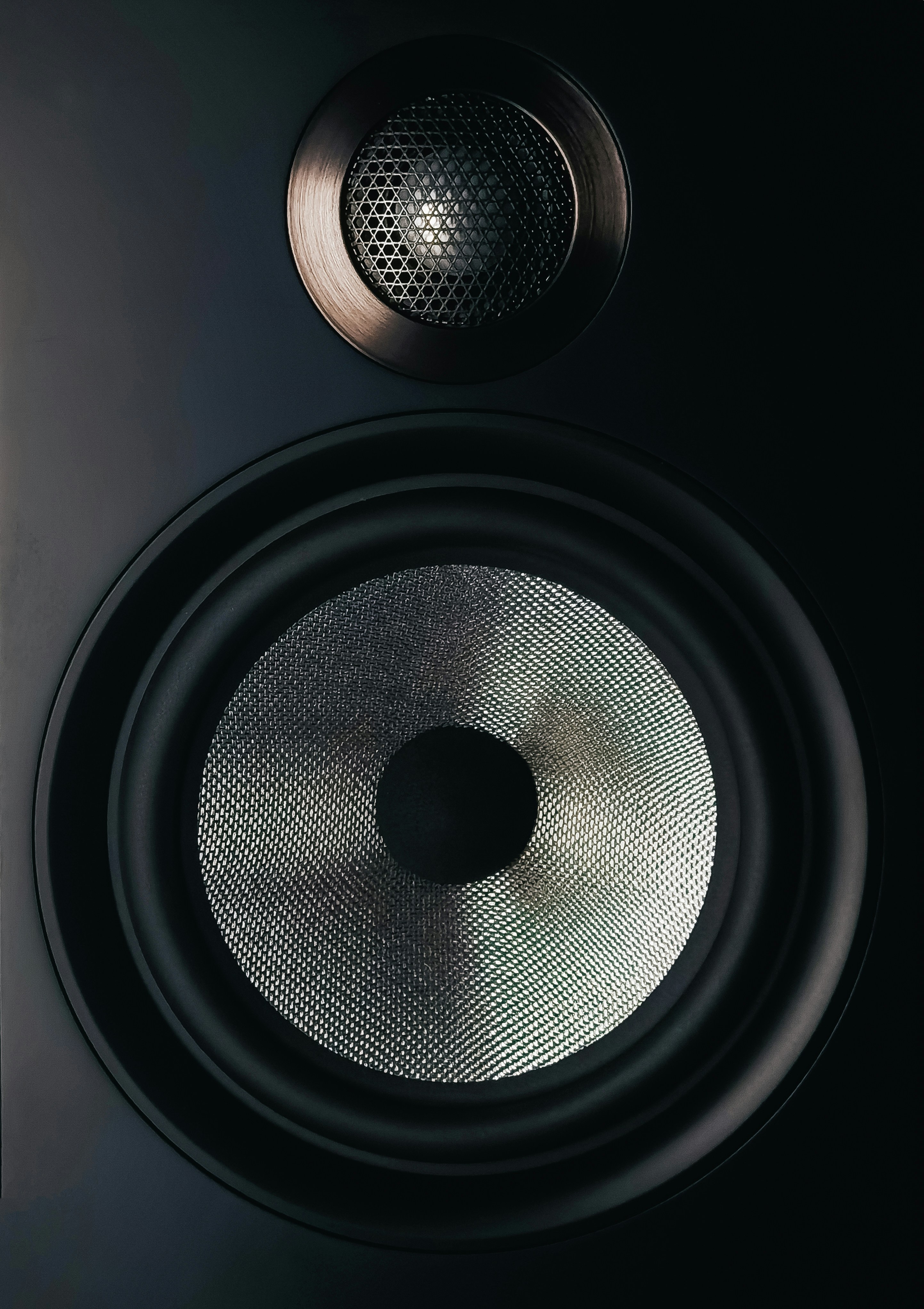If you’ve ever found yourself wishing for a quieter home or office space, you’re not alone. The constant sound of chatter, footsteps, or even music from neighboring rooms can be incredibly distracting. Fortunately, there are simple and effective ways to reduce noise between rooms.
In this article, you’ll discover strategies that will help you create a more peaceful and tranquil environment, allowing you to focus, relax, or simply enjoy some peace and quiet.
Seal gaps and cracks
Identify and seal gaps around windows and doors
When it comes to reducing noise between rooms, one effective strategy is to seal any gaps and cracks around windows and doors.
These small openings can allow sound to easily travel from one room to another, so it’s important to identify and seal them properly.
You can use a caulk gun or weatherstripping to seal any gaps or cracks you find. Pay close attention to the areas around the frames and the spaces between the windows or doors and the walls.
By sealing these gaps, you can significantly reduce the amount of noise that enters or escapes from different rooms in your home.
Use weatherstripping to seal gaps under doors
Another common area where noise can easily pass through is under the doors. To minimize sound transmission, consider using weatherstripping to seal the gaps beneath your doors effectively.
Weatherstripping is a thin material that can be easily applied to the bottom of the door to create a tight seal when it’s closed.
This prevents sound from traveling through the gaps and helps create a quieter environment within your home. Be sure to choose weatherstripping that is specifically designed to block sound for optimal results.
Apply caulk to seal gaps in walls and ceilings
In addition to gaps around windows and doors, it’s crucial to identify and seal any gaps in walls and ceilings. These openings can create pathways for sound to travel from one room to another.
To address this, you can use caulk to seal any visible gaps in your walls and ceilings. Simply apply the caulk along the edges of the gaps, ensuring that it fills the entire space.
Once the caulk dries, it creates a barrier that can significantly reduce noise transmission. Remember to inspect your walls and ceilings thoroughly to identify any potential gaps that need sealing.
Install soundproofing materials
Hang acoustic panels on walls
To further enhance the soundproofing of your rooms, consider hanging acoustic panels on the walls. Acoustic panels are specially designed to absorb sound waves and reduce reverberations, making them perfect for reducing noise between rooms.
These panels come in a variety of sizes, shapes, and colors, allowing you to choose options that blend seamlessly with your existing decor.
By strategically placing acoustic panels on the walls, you can effectively minimize sound reflections and create a quieter and more comfortable environment.
Use soundproof curtains or blinds on windows
Windows are often a significant source of noise transfer between rooms. To mitigate this issue, you can install soundproof curtains or blinds on your windows.
These specially designed window treatments feature additional layers of sound-absorbing materials that can help block outside noise from entering your home.
These curtains or blinds are available in various styles and colors, allowing you to maintain the desired aesthetic while enjoying the benefits of reduced noise transmission. Remember to cover all windows in the room to achieve the best results.
Install a soundproof door
When it comes to soundproofing, doors play a crucial role in preventing noise from traveling between rooms.
If you have hollow-core doors, consider upgrading to solid-core doors for better sound insulation. Solid-core doors are denser and can effectively block sound waves from passing through.
Additionally, you can also install a door sweep at the bottom of the door to seal any gaps that may allow sound to escape or enter the room. By investing in a soundproof door, you can create a more peaceful and tranquil environment within your home.
Apply soundproof wallpaper or paint
Another option to consider is applying soundproof wallpaper or paint to the walls of the room. These specialized products contain sound-absorbing properties that can help reduce noise transmission.
Soundproof wallpaper is typically made of materials with high-density fibers that effectively absorb sound waves. Soundproof paint, on the other hand, contains acoustic additives that aid in noise reduction.
By using these soundproofing materials, you can enhance the overall sound insulation of the room and create a quieter space.
Use insulation to reduce sound transmission
Insulation is an essential element in reducing noise transmission between rooms. It helps to absorb and dampen sound waves, preventing them from traveling through walls and ceilings.
Consider adding insulation to the walls and ceilings to enhance the soundproofing of your rooms. There are various types of insulation available, such as fiberglass, cellulose, and foam insulation.
Choose the one that best suits your needs and budget. By properly insulating your walls and ceilings, you can significantly decrease the amount of noise that enters or leaves the room.
Use soundproofing techniques
Opt for carpet or rugs instead of hard flooring
The type of flooring you choose can greatly impact the level of noise that travels between rooms. If you have hard flooring, such as hardwood or tile, sound waves can bounce off the surface and create echoes, resulting in increased noise transmission.
To minimize this, opt for carpet or area rugs instead. The soft fibers of carpet and rugs help absorb sound waves, reducing the overall noise level in the room.
They create a more acoustically-friendly environment, making it easier to have conversations or engage in activities without disrupting other areas of the house.
Place furniture strategically to absorb sound
Strategic furniture placement can also contribute to reducing noise between rooms. By positioning furniture in a way that creates barriers or absorbs sound, you can effectively minimize noise transmission.
Place upholstered furniture against shared walls to act as sound barriers that block or absorb sound waves. Additionally, bookshelves filled with books or decorative items can also help reduce sound reflections.
These items help to scatter and absorb sound waves, preventing them from traveling across rooms. Remember to consider the layout of your space and experiment with furniture arrangements to find the most effective configuration for soundproofing.
Add bookshelves or wall-mounted shelves
As mentioned earlier, bookshelves can serve as effective sound barriers due to their ability to scatter and absorb sound waves.
Consider adding bookshelves or wall-mounted shelves to the shared walls between rooms. These shelves not only provide storage space but also help reduce noise transmission.
Fill the shelves with books, decorative items, or sound-absorbing materials to enhance their soundproofing capabilities.
By incorporating these shelves into your room’s design, you can effectively create a quieter and more peaceful environment.
Use soundproof room dividers
To create separate zones within a room or to minimize noise from one area to another, consider using soundproof room dividers.
These dividers are specifically designed to block and absorb sound waves, providing privacy and reducing noise transmission.
Soundproof room dividers come in various styles and materials, allowing you to choose one that suits your aesthetic preferences and functional needs.
Whether you want to create a dedicated workspace or separate a noisy area from a quiet one, these dividers can effectively contribute to reducing noise between rooms.
Upgrade doors and windows
Replace hollow-core doors with solid-core doors
One of the most effective ways to reduce noise transmission between rooms is by upgrading your doors. Hollow-core doors, commonly found in many homes, allow sound to easily travel through their lightweight construction.
To improve sound insulation, replacing hollow-core doors with solid-core doors is a recommended upgrade. Solid-core doors are denser and heavier, providing better soundproofing properties.
By investing in solid-core doors, you can significantly reduce the amount of noise that travels between different areas of your home.
Install double-glazed or laminated glass windows
Windows are another critical area where noise can enter or escape from your rooms. If you live in a particularly noisy environment, consider installing double-glazed or laminated glass windows.
These types of windows feature multiple layers of glass or acoustic panels that help block and absorb sound waves.
Double-glazed windows have an air space between the glass layers, creating a barrier against noise.
Laminated glass windows consist of two or more layers of glass with a layer of sound-dampening interlayer in between. They effectively reduce noise transmission and provide better sound insulation for your rooms.

Soundproof walls
Add mass to the walls by using soundproof drywall
If you’re looking for a more comprehensive solution to soundproofing, consider adding mass to your walls by using soundproof drywall.
Soundproof drywall, also known as acoustic drywall or mass-loaded vinyl (MLV), is designed to absorb and block sound waves effectively.
Its dense composition helps deaden vibrations and absorb sound, making it an ideal choice for soundproofing your walls.
This type of drywall can be used as a replacement for existing drywall or applied as an additional layer. By incorporating soundproof drywall into your walls, you can significantly improve their soundproofing capabilities and reduce noise transmission.
Apply soundproofing compounds to existing walls
For those who don’t want to replace their existing walls, applying soundproofing compounds can be an effective alternative. Soundproofing compounds, such as green glue, are specially formulated to dampen sound vibrations and reduce noise transmission.
These compounds can be easily applied to existing walls by sandwiching them between layers of drywall. The compound converts sound energy into heat, effectively minimizing sound waves’ ability to travel through the walls.
By applying soundproofing compounds, you can enhance your walls’ sound insulation without the need for extensive renovations.
Install resilient channels to prevent sound vibrations
Another technique to consider when soundproofing your walls is installing resilient channels. Resilient channels are metal or wooden strips that are attached to the studs before installing the drywall.
These channels create a small gap between the drywall and the studs, which helps to break the path of sound vibrations.
By decoupling the drywall from the studs, resilient channels reduce the direct transmission of sound waves and minimize the noise that travels between rooms.
Including resilient channels during your wall construction or renovation can significantly contribute to a quieter and more peaceful living environment.
Use soundproof flooring
Install soundproof underlayment beneath flooring
To reduce noise transmission through your floors, consider installing soundproof underlayment beneath your flooring.
Soundproof underlayment is a specially designed material that goes between the subfloor and the flooring material. It helps to absorb impact noise, such as footsteps and dropped objects, and prevents it from traveling to the rooms below.
Whether you have hardwood, laminate, or tile flooring, adding soundproof underlayment can significantly improve sound insulation and create a quieter living space. It’s important to choose underlayment specifically designed for noise reduction for optimal results.
Choose thick carpet with padding
If you prefer soft flooring, choosing thick carpet with padding can be an excellent option for soundproofing. The dense fibers of the carpet help absorb sound waves, reducing noise transmission between rooms.
Additionally, the padding beneath the carpet further enhances the soundproofing properties by acting as an additional layer of insulation.
When selecting carpet, consider opting for a thicker pile and higher density to maximize its noise-reducing capabilities. By installing thick carpet with padding, you can create a cozy and quiet environment that minimizes noise transfer.
Consider cork or rubber flooring for noise reduction
Cork or rubber flooring is another choice to consider when aiming to reduce noise between rooms. These materials have natural sound-absorbing properties that can effectively dampen sound vibrations and create a quieter environment.
Cork flooring is made from the bark of cork oak trees, while rubber flooring is manufactured from recycled rubber. Both options provide excellent impact noise reduction and can be an ideal choice for areas with high foot traffic or where noise insulation is a priority.
By opting for cork or rubber flooring, you can enhance your room’s soundproofing while enjoying the benefits of durable and eco-friendly flooring options.

Eliminate airborne noise
Use white noise machines
To mask or drown out noise between rooms, white noise machines can be a useful tool. These devices produce a consistent sound across all frequencies, which helps to mask other background noises.
By creating a constant and soothing sound environment, white noise machines can effectively minimize the perception of noise between rooms.
Place the machine strategically in the room to ensure optimal coverage and adjust the volume to your desired level of noise masking.
Whether you prefer the sound of rainfall, ocean waves, or a simple steady hum, white noise machines can help create a more peaceful atmosphere.
Install ceiling fans or air purifiers
Ceiling fans or air purifiers can serve multiple purposes when it comes to noise reduction. Firstly, the gentle hum and circulating air from ceiling fans can create white noise that masks surrounding sounds.
This can be particularly effective in bedrooms or living areas where noise from other rooms can disrupt relaxation or conversations.
Secondly, air purifiers equipped with noise-reducing features can help eliminate airborne particles and provide a constant source of background noise.
By incorporating these devices into your spaces, you can improve air quality and create a more serene and sound-friendly environment.
Consider soundproofing HVAC ducts
If the HVAC ducts in your home are a source of noise transmission between rooms, consider soundproofing them to reduce the noise. HVAC ducts can carry noise generated by the heating or cooling system to different areas of the house.
To address this, you can install soundproofing materials around the ducts to dampen the sound vibrations.
Soundproof insulation or acoustic duct liners can be applied to the interior walls of the ducts to reduce noise transmission.
By soundproofing your HVAC ducts, you can minimize the amount of noise that travels through the ventilation system, resulting in a quieter living environment.
Minimize impact noise
Use rugs or carpet with padding to absorb impact noise
When it comes to reducing impact noise, such as footsteps or dropped objects, placing rugs or carpets with padding can be highly effective.
The soft fibers of rugs or carpets help absorb and dampen the impact noise, preventing it from reverberating and transmitting to other rooms.
Consider placing rugs in high-traffic areas or under furniture to minimize the sound of footsteps. Additionally, choose carpets with thicker padding for enhanced impact noise reduction.
By incorporating rugs or carpeting with padding, you can significantly reduce the impact noise that travels between rooms.
Avoid walking with shoes indoors
One simple way to minimize impact noise is to adopt a no-shoes policy indoors. Shoes, especially those with hard soles, can create significant noise when walking on hard flooring.
By removing your shoes at the entrance of your home and encouraging others to do the same, you can reduce the amount of impact noise generated within your living spaces.
Slippers or socks can be worn instead, which produce less noise when walking. This small change in habit can go a long way in improving the overall soundproofing of your rooms.
Consider installing soundproofing materials on ceilings
Ceilings can act as a surface for impact noise to travel through, particularly if you have multiple floors in your home. To address this, consider installing soundproofing materials on the ceiling to dampen the impact noise.
Acoustic ceiling tiles or resilient underlays can be used to reduce sound vibrations and prevent them from traveling to the rooms above or below.
These materials help absorb and disperse sound waves, ensuring that impact noise is less pronounced.
By paying attention to the ceiling as well as the walls and floors, you can create a more comprehensive soundproofing solution for your home.
Soundproof through electrical outlets
Install soundproof outlet inserts
Electrical outlets can be a surprising source of noise transmission between rooms. Sound vibrations can easily travel through the gaps around electrical outlets, contributing to noise leakage. To address this issue, you can install soundproof outlet inserts.
These inserts are designed to fit within the outlet, helping to seal the gaps and minimize sound transmission. Simply remove the outlet cover, insert the soundproof insert, and then replace the cover.
This simple yet effective solution can significantly reduce the amount of noise that passes through electrical outlets, contributing to a quieter living environment.
Seal gaps around electrical outlets with foam gaskets
In addition to using soundproof outlet inserts, another method to soundproof electrical outlets is to seal the gaps around them with foam gaskets. Foam gaskets are small insulating pads that can be placed between the outlet and the outlet cover.
They effectively seal any gaps or spaces, preventing sound from escaping or entering through the outlets. Foam gaskets are easy to install and require no special tools.
Simply remove the outlet cover, place the foam gasket over the outlet, and then reattach the cover. By sealing the gaps around electrical outlets, you can further enhance the overall soundproofing of your rooms.
Implement soundproofing in ceilings
Install acoustic ceiling tiles
Acoustic ceiling tiles are an excellent option for reducing noise transmission through ceilings. These tiles are designed to absorb and dampen sound waves, preventing them from reflecting and transmitting to other rooms.
Acoustic tiles are available in various designs and textures, making it easy to find options that match your aesthetic preferences.
These tiles can be installed directly onto the ceiling surface or within compatible suspended ceiling systems. By incorporating acoustic ceiling tiles, you can create a quieter and more pleasant living environment.
Apply soundproofing paint or wallpaper to the ceiling
Another way to soundproof your ceiling is by applying soundproofing paint or wallpaper. These specialized products contain sound-absorbing properties that help reduce noise transmission.
Soundproofing paint or wallpaper is typically applied directly to the ceiling surface, offering an additional layer of sound insulation.
It’s important to follow the manufacturer’s instructions when applying these products to achieve the best results.
By treating the ceiling with soundproofing paint or wallpaper, you can effectively minimize noise from passing through the ceiling and create a quieter atmosphere.
Use damping compound to reduce sound transmission
Damping compounds are another effective solution for reducing noise transmission through ceilings. These compounds are applied directly to the ceiling surface and work by converting sound energy into heat.
By doing so, damping compounds dampen sound vibrations, preventing them from traveling through the ceiling.
The compound is typically applied between layers of drywall or as an additional layer on top of existing ceiling surfaces.
By incorporating damping compound into your ceiling’s construction or renovation, you can significantly improve the soundproofing of your rooms and reduce noise transmission.
In conclusion, reducing noise between rooms requires a comprehensive approach that addresses different areas of your living space.
By implementing strategies such as sealing gaps and cracks, installing soundproofing materials, utilizing soundproofing techniques, upgrading doors and windows, soundproofing walls and flooring, minimizing airborne and impact noise, and addressing electrical outlets and ceilings, you can create a quieter and more peaceful environment within your home.
Remember to assess your specific needs and choose the most suitable solutions for each room to achieve optimal soundproofing results.




